The KIN network is bursting with people who are working hard all year round to make the Netherlands climate-proof for the future. This summer, we are pressing pause for a moment and letting a couple of them tell their story.
Go to the interview with:
- Katja Out – Juristen voor een Duurzame Wereld (JDW)
- Tessa Koenderik-Kramer (KlimaatGesprekken)
- Carolyn Caporusso – WWF-NL Dutch Caribbean Program
- Tim van Hattum – Wageningen Environmental Research, Green Climate Solutions (Wageningen University & Research)
- Kornelia Dimitrova (Foundation We Are)
- Arlon Luijten (theater maker and teacher)
- Myra Colis (founding chairperson of MABIKAs Foundation)
- Shivant Jhagroe (Netwerk toegankelijke Voedselgemeenschappen/Universiteit Leiden)
- Charisma Hehakaya (Global Public Health UMC Utrecht/ACT)
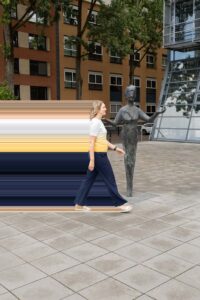
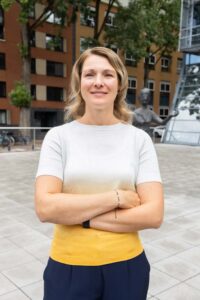
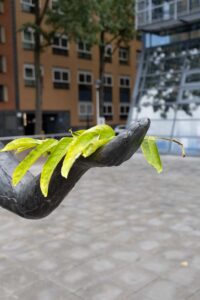
Katja Out – Juristen voor een Duurzame Wereld (JDW)
Katja Out works as a corporate lawyer at an insurance company and is chair of the board of Jurists for a Sustainable World (JDW), an initiative that mobilises lawyers to actively contribute to a sustainable and just society.
What motivates you?
“I was looking for more meaning and impact and saw the opportunity to achieve this at JDW because it challenges lawyers, precisely because it challenges them to not just keep their expertise on paper, but to use it for real social change. JDW connects legal professionals through climate tables, knowledge sessions, a biennial conference and a growing online knowledge base. In this way, we are building a network that uses legal knowledge to support and accelerate the major transitions of our time.”
What challenges do you see?
The power of legal knowledge goes beyond paper. The JDW network demonstrates this. The perspectives are diverse, ranging from corporate lawyers and attorneys to government lawyers and NGOs. This is precisely what creates room for innovative solutions. I believe that inspiring colleagues should ultimately become unnecessary: ESG values should be self-evident in every legal consideration.
We’re not there yet, but we’re heading in the right direction. This requires a strong network that focuses on knowledge, collaboration and content. The network grant that JDW has received through KIN will help us to continue organising (physical) events. But the network also plays a central role online: the website is really becoming a platform that lawyers can use as a starting point.”
What object symbolises your climate mission and that of JDW?
‘The green branch in the hand of Lady Justice fits in with our view: lawyers should not only pursue justice, but also care for people, nature and future generations. It connects the pursuit of justice with the pursuit of a sustainable, liveable world.’

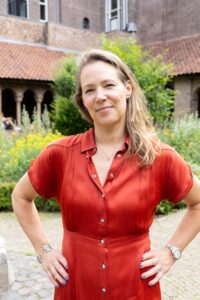
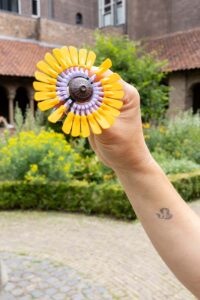
Tessa Koenderink-Kramer – Klimaatgesprekken
Sometimes you have to hit rock bottom before you can really get moving. That is exactly what Tessa Koenderink-Kramer experienced and now wants to achieve with KlimaatGesprekken (Climate Conversations).
Who are you and what do you do?
“I am director of training and organisations at the Climate Conversations Foundation. Together with my colleagues, we train climate coaches and guide organisations and companies in how they can stimulate sustainable behavioural change. We help people discover how they can get moving at home and at work and how they can get others on board. My own journey began with a search for answers to why people flee. That’s when I discovered the enormous role of climate change, quit my job and decided that I wanted to make a difference myself and help others do the same.”
What would you like to accelerate in your work?
‘I want us to become more effective as an organisation. By professionalising, we can reach even more people and strengthen their sustainability skills. People often think that behaviour is something that comes “on top”, but human behaviour accounts for about 60% of the challenge. If we focus more on that, we can really make a difference.’
What helps you do that?
‘It starts with emotion. Many organisations want to jump straight to solutions, but we first need to really touch people so that they become intrinsically motivated. We do that with our methodology, which is used in various countries. You don’t have to do everything at once: start small, choose something that suits you. That way, the step isn’t overwhelming and you get moving in a sustainable way.’
What object symbolises your mission?
‘The bee. Bees represent social connection and cooperation, which is exactly what KlimaatGesprekken is all about. A small bee plays a big role in the ecosystem. In the same way, I believe that every person has their own important role to play in the climate transition. My mission is to make people curious about that role and to get them moving.’
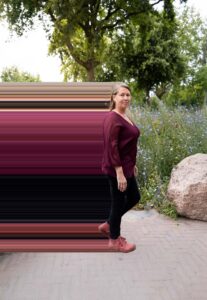


Carolyn Caporusso – WWF-NL Dutch Caribbean Program
Climate resilience isn’t just about protecting nature, it’s about protecting people too. And action is needed now, beyond reports and plans.
Who are you and what do you do?
“I’m a Program Advisor for the WWF-NL Dutch Caribbean Program. We work to strengthen the resilience of coastal ecosystems to climate change — from tackling marine litter and wastewater to supporting restoration of mangroves and coral reefs. We also advocate for policy changes and support local organizations in the Dutch Caribbean and the wider region. Our approach combines advocacy, funding, community partnerships and education. It’s all about building bridges: between nature and society, between global strategies and local action.”
What do you want to accelerate in your work?
“I want to speed up the understanding that everything is connected. When we work on Bonaire, we don’t just look at nature in isolation; we consider socio-economic challenges too. Sustainable development and nature conservation must go hand in hand. We need to build real synergy if we want lasting change — not only for ecosystems, but for the communities who rely on them.”
What would help you move forward?
“There are no quick fixes, and that’s part of the challenge. We have fantastic strategies and strong ambitions, but we need to move beyond paperwork and start acting. To do that, we need more capacity. Not just funding, but development of local expertise with equitable wages and career opportunities in conservation. It’s easy for external experts to suggest solutions, but true change means empowering local communities to lead and own these efforts.”
Which object symbolizes your mission?
“My hand fan. I carry it everywhere in Bonaire’s heat. It’s a simple, low-tech way to stay comfortable without using extra energy. It reminds me of our need to look at history and find traditional, efficient solutions that respect our environment. It symbolizes care: for ourselves, for each other, and for our shared climate. We need to take responsibility for how we keep ourselves and our ecosystems cool and resilient.”
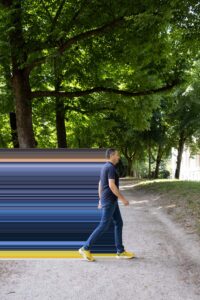
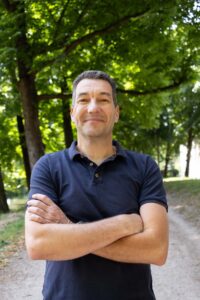

Tim van Hattum – Wageningen Environmental Research, Green Climate Solutions (Wageningen University & Research)
How do you get people moving and keep hope alive when you are building climate transitions? What is missing and what is the next step? A plea for enthusiasm with perspective and a clear narrative.
Who are you and what do you do?
“I am head of the climate programme at Wageningen Environmental Research, Green Climate Solutions, part of Wageningen University & Research. With our team, we investigate the impact of climate change on cities, agriculture, nature and society. We develop knowledge about solutions, especially nature-based solutions, that help with mitigation and adaptation. In addition, I provide advice, developed a vision for the Netherlands in 2120 together with a whole team, and wrote the book Only Planet, a hopeful climate guide for the 21st century.”
What would you like to accelerate in your work?
“We have already demonstrated countless pilots: nature-based solutions really work. They store CO₂, improve biodiversity, ensure cleaner water and healthier cities. But they only become truly effective when we scale up. That is complex, because each area requires customisation and cross-sector cooperation. It helps if we don’t overwhelm people with urgency, but inspire them with perspective. The “silent majority” is definitely concerned, but needs a clear narrative. We need to use better fact-based storytelling and make it clear what these solutions mean in concrete steps towards 2030 and 2040.”
What would help in this regard?
“Collaboration in broad consortia, such as within KIN, can accelerate this. Scientists are often strong on facts, but we need to learn to make the story appealing and understandable. That’s why I’m now also taking a course in storytelling.”
What object symbolises your mission?
“My running shoes! I regularly run climate marathons, which symbolise how I view the transition: as a long route with peaks, valleys and a broom wagon breathing down your neck. It requires stamina and perseverance. Sometimes it’s tough, but the clear goal and that euphoric “runner’s high” make it worthwhile. That’s how I view the climate challenges too.”



Kornelia Dimitrova – Foundation We Are
How do we create space for unexpected collaborations? And what happens when designers and scientists dare to step into the unknown together?
Who are you and what do you do?
“I’m a spatial designer, researcher and director of Foundation We Are. We create spaces and programs where designers work directly with societal experts (from climate scientists to human rights defenders) to explore what collaboration can really mean. Our mission is to help make transitions more just, democratic and inclusive. We don’t create linear or pre-defined solutions; we create programs where we design, experiment and learn with our community of collaborators. Our approaches and insights are designed to be adaptable and scalable, resonating both in hyper-local and in international contexts.”
What do you want to accelerate in your work?
“I want to give people the space to figure out what climate action and responsibility they want to take professionally, whether designers, scientists, or policymakers. Too often, people feel burdened by predefined outcomes or fixed roles. In projects like ‘Collaborations for Future’, we created open-ended collaborations where 20 designers and climate scientist could truly experiment, reflect and reposition themselves. The ‘Impossible Projects’ we’re doing now with KIN take this even further: we’re mapping what limits us in current research systems and exploring how we can unlock new ways of working together. We need more spaces to explore, to fail, to learn. That’s where real shifts start.”
What would help you move forward?
“We need to structure these programs over longer periods, like multi-year cycles that build impact gradually. Support from ministries or policy partners would help connect these experiments directly to decision-making. Ultimately, it’s about creating an infrastructure that supports real, cross-disciplinary action.”
Which object symbolizes your mission?
“A sailboat! Sailing embodies teamwork, adaptability, and deep knowledge of your tools and environment. You can’t force the wind, but you can adjust your sails and ropes; knowing when to tighten and when to loosen. I grew up sailing on the Black Sea; it taught me to navigate forces beyond my control while staying connected to nature. It reminds me that progress isn’t always linear. Sometimes you tack against the wind, but you can still move forward, gracefully and together.”
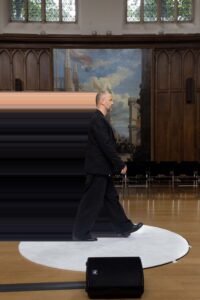

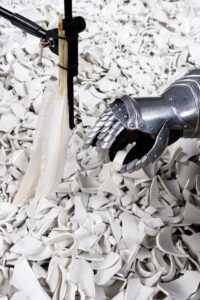
Arlon Luijten – Theater maker and Teacher
‘Science can provide direction, slow things down or speed them up. But only if we dare.’ As an artist, how do you create a space where courage and imagination lead to real change?
This summer, we are presenting 10 accelerators from the KIN network who are keeping the transition to a climate-proof future in motion. In this series, we press pause for a moment and let them tell us about their motivations and challenges. Today: Arlon Luijten.
Who are you and what do you do?
“I am a theatre maker and teacher. I design art projects and interactive installations that blend learning, playing, researching and creating. I work with scientists, policymakers and social partners to not only discuss complex issues, but also make them tangible and experiential.
Can you give an example?
“The Table of Courage is a physical object and methodology developed with KIN, DRIFT (Ties van Daal, Almar Bok and Lou Seidel) and OCW. It is a kind of space for courage and gentleness, which leads to decisiveness. It is a conversation technique and “urgency generator” that invites administrators from the scientific community to make courageous choices. You need courage to get started, but it also gives you courage. It invites you to dream together, to doubt and ultimately to take concrete steps.”
What would you like to accelerate in your work and what would help you do that?
‘I want us to work much more from multiple dimensions at the same time: technical, philosophical, emotional and artistic. Only by combining these different dimensions can we truly develop new perspectives and create movement. What would help is for people to be given the space to dream and experiment – with their heads, hearts and bodies.’
And what would help with that?
“Above all, lots of testing! That allows the work to be refined.”
Which object symbolises your mission?
“For this, I combined two pieces from my theatre play “Graniet” into a new object. For me, it’s all about the tension between two objects: a soft feather and a steel knight’s glove. The feather represents resilience, softness and protection; a breathable armour that invites you to move and be vulnerable. The glove symbolises strength, safety and decisiveness. Together, they embody the balance between dreaming and doing, between caution and resolve, on a bed of systemic criticism. The Table of Courage forces you to seek out that tension and make courageous choices that don’t just remain words, but actually set something in motion.”
The coming period will be devoted to testing the Table of Courage. Would you be interested in testing this nomadic object with a facilitator? Please contact Stephi at s.holst@nwo.nl.
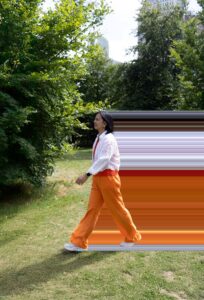
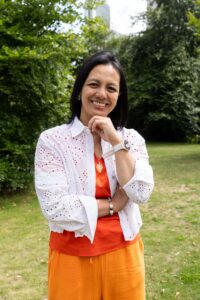
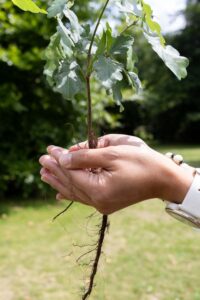
Myra Colis – Founder MABIKAs Foundation
Indigenous knowledge holds deep wisdom for navigating the climate crisis but it needs recognition and space to thrive. A very much underexplored and underresearched topic that deserves more attention.
This summer, we introduce 10 accelerators from the KIN network who keep the transition towards a climate-resilient future in motion. Today: Myra Colis.
Who are you and what do you do?
“I’m an indigenous woman originally from the Philippines and the founding chairperson of MABIKAs Foundation, established in 2016. Our foundation focuses on cultural preservation, not just of traditions but also of values and knowledge; especially in the modern Western context and when approaching global challenges, including climate change, migration, AI, etc. We create a space for indigenous communities to connect, share, and build collective missions, not only amongst ourselves as indigenous Igorots but also beyond borders. We are still here and our voices matter now more than ever. It’s always about protecting Mother Earth and recognizing that indigenous communities safeguard more than 80% of the world’s biodiversity.”
What do you want to accelerate?
“We want to preserve our ancestral wisdom, perhaps through books or educational materials, to ensure it remains a living guide. Many ‘wisdom keepers’ are aging, and traditionally, knowledge is passed orally from generation to generation. In today’s age of AI and misinformation, it is easier than ever to be misled and fall into confusion and misguided decisions.”
What would help you move forward?
“Collaboration and genuine inclusion. With support from KIN and partnerships with universities and policymakers, we can build platforms where indigenous voices are not only heard but centered. When organizations host climate events or any initiatives involving knowledge extraction from indigenous people, it’s crucial to understand that Indigenous knowledge should not be extracted, paraphrased, or represented by non-Indigenous actors without visibility, credit, or leadership from Indigenous people themselves. We also need resources to support our communities fairly, so they can participate as experts and leaders.”
Which object symbolizes your mission?
“A seed, especially an acorn. It’s small and often overlooked, yet it carries immense potential and ancient wisdom. With care, it can grow into an oak tree, one of the strongest symbols of resilience and strength. Seeds represent the transmission of knowledge across generations and the nurturing needed to build strong, interconnected ecosystems. They remind us that even the smallest actions, when rooted in care and understanding, can create lasting, transformative impact.”
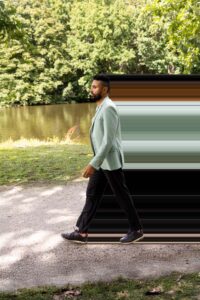

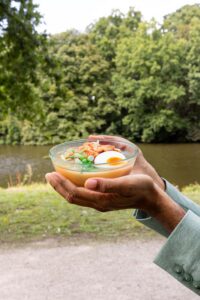
Shivant Jhagroe – Netwerk Toegankelijke Voesdelgemeenschappen/Unviversiteit Leiden
Not everyone feels at home and participates in the sustainable food movement. Yet it is precisely these perspectives that are indispensable for a fair food transition. How can we make food initiatives truly inclusive, not just sustainable or local?
In this summer series, ten accelerators from the KIN network talk about their work towards a climate-proof future. Today: Shivant Jhagroe. Shivant is involved in the Accessible Food Communities Network, an initiative of Squarewise, Leiden University and local frontrunners, among others, and part of the KIN Pact.
Who are you and what do you do?
‘I am a lecturer in Public Administration at Leiden University. For 15 years, I have been working on issues related to sustainability, inequality and justice. My focus is on how we can make sustainable choices as inclusive as possible, not only in the food system, but also in energy and climate.’
What do you want to accelerate in your work?
“Unfortunately, a sustainable lifestyle is often still an eco-elitist affair. People with lower incomes or a migrant background are often still not very involved. That’s a shame, because although they are socially excluded, growing fruit and vegetables is also very meaningful to them. The focus of our working group is therefore: how can we make urban development initiatives as accessible as possible?
What helps you in this regard?
‘Structural support from governments is needed to ensure that initiatives are sustainable. By that I don’t just mean money and time, but also space and less restrictive rules. Equally important are inspiring learning environments: communities where food initiatives, policymakers and researchers can meet. We need these places to share and record lessons learned, so that others can build on them.’
What object symbolises your mission?
“A bowl of saoto soup! It has so many symbolic meanings. It is a dish (from Javanese-Surinamese cuisine) that you make and eat together, representing community and connection. The soup reflects the superdiversity of the city and the many cultural stories associated with it. The ingredients also vary from family to family and are passed down from generation to generation, just like knowledge and traditions. Saoto is comfort food, but also a metaphor for sustainable change: you need land, knowledge, time and cooperation. It shows that food transition is not just about technology, but also about identity, inclusion and appreciating “green stories of colour”. This symbolic intersection (the soup unites flavours, cultures, knowledge and memories in one dish) is therefore the symbol for my climate mission.”
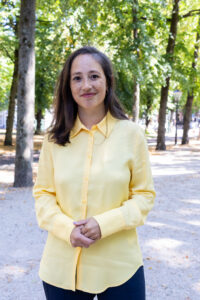
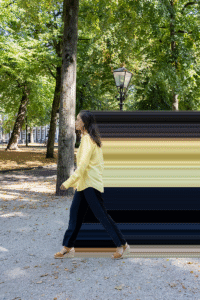

Charisma Hehakaya – Global Public Health UMC Utrecht/ACT
Climate change affects us all, but not everyone equally. Not everyone is heard, and not everyone is given the space to express themselves.
In this summer series, we introduce you to accelerators from the KIN network. They are working (each in their own way) towards a future in which sustainability is truly distributed fairly. Today: Charisma Hehakaya.
What exactly do you do?
“I am a university lecturer in the Global Public Health department at UMC Utrecht and am active in a working group of KIN’s ACT (Accelerating Just Climate Transitions in Urban Regions) work programme. My work here revolves around climate justice and health.
In the work programme, I work with colleagues (with backgrounds in medicine, epidemiology, anthropology, and law) to investigate what “fair” means in the context of climate transition; who bears the burdens and reaps the benefits, who decides, who is heard? But also: who has the knowledge and how and with whom is this communicated? We put these questions into practice through workshops and discussions with people who are directly affected by the consequences of climate change. Think of residents, district nurses or social workers.‘
What do you want to accelerate and what do you need to do that?
’I want climate policy to also promote health and well-being, especially for people in vulnerable positions. With complex issues like this, scientific knowledge is often considered dominant, while the knowledge of someone who doesn’t have a roof over their head is just as important. This requires collaboration between researchers, policymakers and, in particular, people who are often excluded. Scientists, in particular, need to really engage with society and make their work visible outside of scientific publications, such as in newspapers or on the radio.”
Which object symbolises your mission?
‘The Moluccan flag. It reminds me of the experiences of my grandfather and the Moluccan community. For me, the flag represents the importance of taking responsibility for your words, actions and promises. For me, the flag symbolises that mistakes from the past should not only be remembered, but also serve as lessons for building a just future.’

